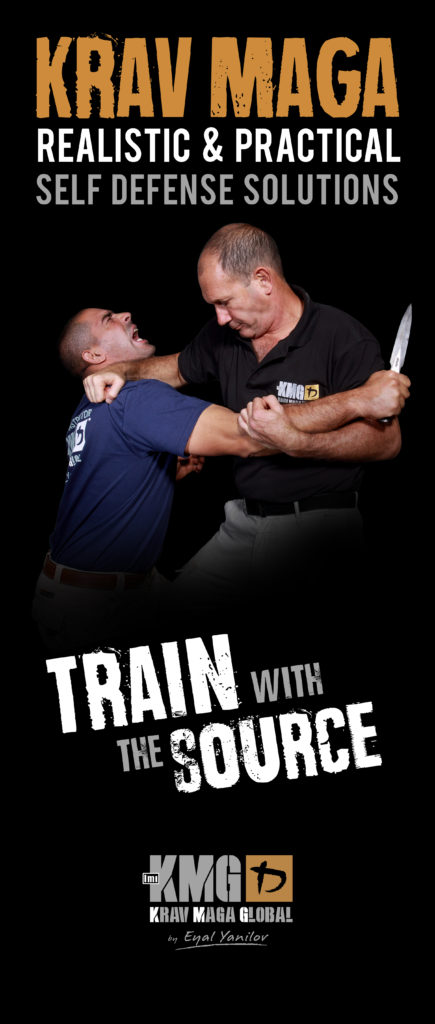di Brett e Kate McKay
Pubblichiamo un interessante articolo che, contestualizzato alla nostra realtà, può rilevarsi estremamente utile.
Mettere in moto dei comportamenti efficaci, in situazioni ad alto stress, fa la differenza. Essere preparati a saper cosa fare, può salvarci la vita.
Buona lettura.
________

It’s a sad fact of life in the 21st century that active shootings have become a regular occurrence in the United States. In other parts of the world, terrorist groups are using active shootings to, well, terrorize. While the media focuses on the firestorm of political debate these events cyclically create, I’ve rarely seen them discuss what people are actually supposed to do in these situations.
According to the FBI, active shootings in public places are becoming increasingly common. Which means it would serve everyone to understand how to respond if they ever find themselves in the line of fire.
Over the years I’ve talked to a lot of military, tactical, and law enforcement professionals who’ve spent their careers training and dealing with violent individuals: U.S. marshals, SWAT officers, and special forces operators. And I’ve asked them all this same question: What’s an average joe civilian like me supposed to do when faced with a gunman who’s indiscriminately firing on people?
They’ve all answered the same way.
In today’s article, I share expert-backed advice on how best to react if you ever find yourself in a
situation with an active shooter. Learning how to survive a shooting is much like learning how to survive an airplane crash: such an event is statistically unlikely to happen to you, and simple chance may make you a victim before you’re able to take any volitional action. But if there are things you can do to increase your odds of survival even slightly, you ought to know and practice them.
Something to Keep in Mind: You’re Probably On Your Own

In a study done by the FBI in 2014, it was discovered that most active shootings end in 2 minutes or less. That’s not enough time for law enforcement to arrive. So when you start hearing gunshots in places you shouldn’t be hearing gunshots, understand that you don’t have very much time to think about what you should do.
That’s why…
You’ve Got to Know What You’d Do Before It Actually Happens
When any sort of emergency situation strikes, be it an active shooter or even a fire, the natural response for most people, surprisingly enough, is not to do anything. We highlighted several of the reasons for this passivity in our article about why most people freeze up in emergency situations. For example, the “normalcy bias” causes victims to act like everything is fine even though things are far from it. Our brain is predisposed to assume that things will carry on in a predictable way. When the pattern is broken, it takes a long time for the brain to process this aberration. This is why many people who witness traumatic events report that it felt surreal, like they were watching a movie and it wasn’t really happening. They also often say that at first they thought the gunshots were fireworks or a car backfiring or a book falling — things that would fit better in their usual paradigm of daily life.
Another bias that keeps us from taking action is our natural tendency to follow the crowd. If we see that everyone else is cowering in fear or locked up by inertia, then our natural tendency is to act the same.
The way you overcome these inclinations towards passivity is deciding exactly what you’ll do in the event of a shooting — before one ever happens. You’ve got to have a plan.
I know it seems morbid, but you really should visualize what you would do in various situations were an active shooter to suddenly intrude upon the scene. What would your plan be if you were in the office and heard shots coming from the floor beneath you? Would you have time to run? If so, where would you go? If you heard the shots just down the hallway and there’s no place to run or hide, what would be your next step? Visualize your plan in as much detail as possible.
In an active shooter situation, seconds matter. You don’t have time to figure out what you’re going to
do when a guy starts spraying a building full of gunfire. By having a general preconceived plan, you give yourself a head start. This all goes back to our article on the OODA Loop. Remember, in any conflict there are multiple loops going on. It’s your loop versus the shooter’s, and the first to complete their respective decision-making cycle usually wins the fight.
OODA Loops can begin way before an actual encounter starts. By coming up with a plan of what you would do in an active shooter situation before one ever happens, you’re already engaged in the second step: Orienting. Should you encounter a shooter, you can act immediately because you’ve already begun the cycle and already have a plan in place. Remember, ABO: Always Be Orienting.
Maintain Situational Awareness Wherever You Go
Besides having a general idea of what you’d do in an active shooter situation, another thing you must do to increase your chances of surviving is constantly maintaining situational awareness.
We’ve written in detail about situational awareness before, so rather than getting into the nitty gritty here, let’s review a few important principles as they apply to shootings:
Stay in condition yellow. Condition Yellow is best described as “relaxed alert.” There’s no specific
threat situation, but you have your head up and you’re taking in your surroundings with all your senses. Most people associate situational awareness with just visual stimulation, but you can also learn a lot about a particular scenario from sounds. This is especially true for active shootings. If you hear gunshots — or something that sounds an awful lot like gunshots — that should be a sign that you need to start immediately preparing to take action.
Though your senses are slightly heightened in Condition Yellow, it’s also important to stay relaxed. Staying relaxed ensures that you maintain an open focus, which allows you to take in more information about what’s going on around you. Research shows that when we get nervous or stressed, our attention narrows, causing us to concentrate on just a few things at a time. A narrow focus can therefore cause us to miss important details in our environment.
Bottom line: Don’t have your nose constantly in your smartphone and don’t zone out; rather, you should open your eyes, ears, and nose, and calmly and constantly scan your environment to take in what’s going on.
Establish baselines and look for anomalies. As Patrick Van Horne notes in his book Left of Bang, a key component of situational awareness is establishing baselines and looking for anomalies. A baseline is what’s “normal” in a given situation, and it will differ from person to person and environment to environment. A baseline in an office would be people working at their desks or chatting in a lobby. A baseline at a restaurant would be people in uniforms coming in and out of the kitchen and customers entering and exiting the restaurant through the front door.

We establish baselines so that we can look for anomalies. Hearing gunshots at a college campus is definitely out of the ordinary, and should immediately trigger your active shooter plan of action. But let’s take a look at a subtler anomaly. If you’re at a movie theater and you see a guy entering the theater from the exit near the screen, that should definitely put you on alert. It could just be a guy sneaking in for a free movie, but it could also be a gunman. You don’t need to go and immediately tackle the guy, but you’d certainly want to keep your eye on him and make sure you’re prepared to quickly move out.
Know where all your exits are. If there’s one actionable takeaway you get from this article, let it be this. Wherever you are, always know the locations of the nearest exits. As we’ll see in a moment, running should be your first line of action in an active shooter situation. You want to get as far away from the gunman as possible and that often means getting out of the building where he’s shooting. So whenever you enter a building, the first thing you should do is look for exit signs and make mental notes of them.
You also need to consider not-so-visible exits. For example, most grocery stores will have an exit door in the very back in the “employee only” section. If you’re near the back of the store and you hear gunshots from the front, you’ll want to head directly to this rear exit. Another example of not-so-obvious exits is in restaurants. Most restaurants will have an exit in the back of the kitchen. If you’re near the kitchen and you hear gunshots near the front of the place, you’d want to hightail it to this back door. Because these exits are in places considered “employee only,” people have been conditioned not to even consider using them. But in an active shooter situation, these kinds of norms obviously go out the window, and preparing yourself to disregard them is a must.
Your Active Shooter Triage: Run, Hide, Fight
So you’ve heard shots and screams. There’s an active shooting happening. What should you do? All the experts agree that you have three possible actions: run, hide, and fight.
Run
Running away should always be your first line of action. As soon as you hear gunfire, leave the premises immediately using your preconceived escape plan and get as far away from the shooter as possible. Ideally, you’ll be able to escape without having to cross the shooter’s path.

Keep in mind that in an active shooter situation, most people won’t want to leave because 1) they’re cowed in fear, 2) they’ve let the normalcy bias take over, or 3) they think hiding should be their first recourse. But you need to run, regardless of what others are doing. Do all you can to convince them to come with you, but if they don’t comply, leave them, and get out of the building or danger area as soon as possible.
Don’t try to gather your belongings. You can replace your laptop; you can’t replace your life.
As you make your exit, tell others to come along with you. Once you’re out of the danger area, prevent others (except for law enforcement) from entering the premises.
When you’re running, keep your hands visible. Law enforcement will be checking you to decide if you’re a threat.
This may go against every humane compulsion you have, but don’t try to move or assist the wounded while you’re making your exit. It leaves you vulnerable to attack; turning one casualty into two won’t ultimately help things. Even the first law enforcement officers to arrive at the scene will initially ignore the wounded so they can take out the shooter. Just as their top priority is to stop the gunman, your top priority is to get to safety.
If you’re in an open area and there’s distance between you and the shooter, run as fast as you can in a zig-zag pattern. Shooting a moving target is hard even for experienced marksman, and many mass shooters have little or no experience with firearms. So move as much as possible and take cover behind barriers that can stop bullets (cement pillars, vending machines, etc.).
As soon as you get to safety, call 911. Don’t assume someone already has.

